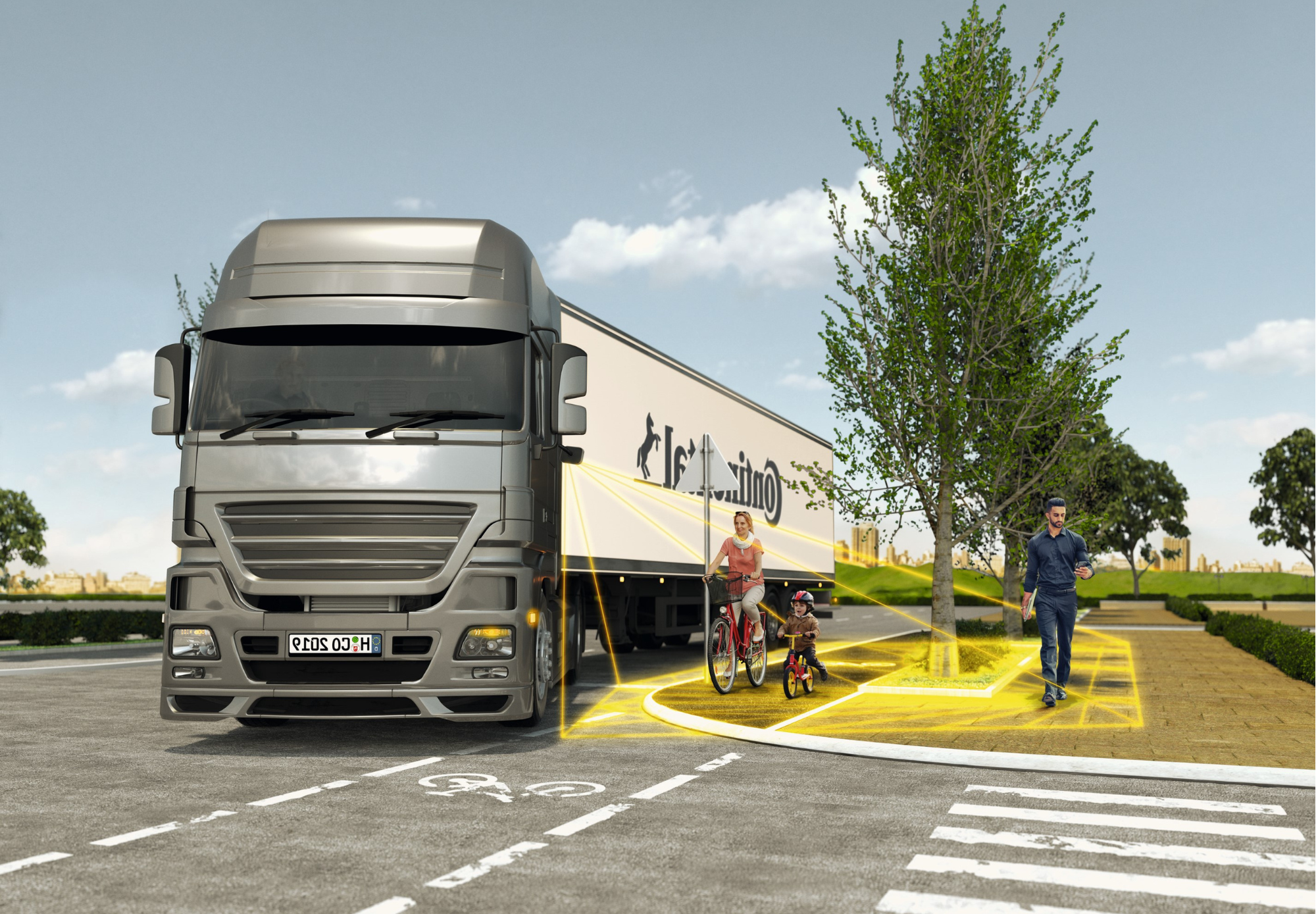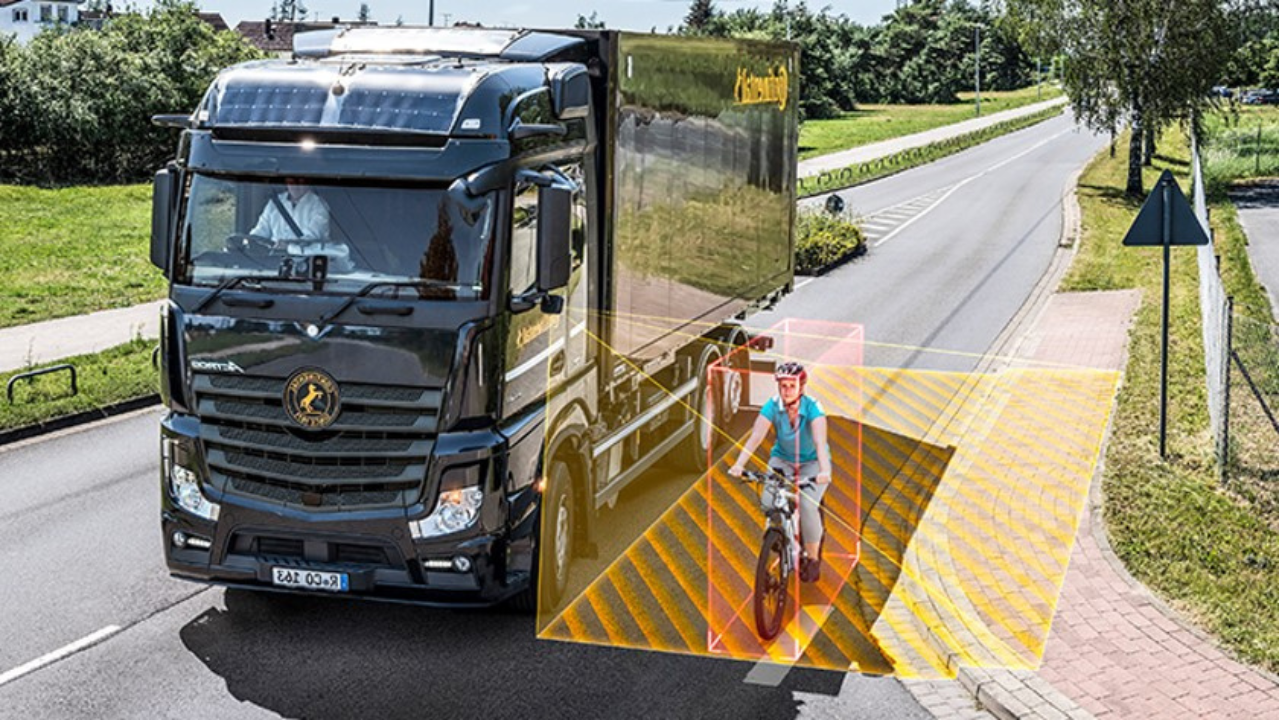AI Cameras will Save Cyclists from Heavy Vehicles
In the coming decade, 40% of Australians will be at risk of being struck by a heavy vehicle if fleet operators don’t take critical CoR actions to...

Blind spots at the front, corner and sides of heavy vehicles are often the main cause of collisions with vulnerable road users, resulting in Australia’s alarming death and injury statistics.
Two contributing factors to these blind spots are the size of the front and side cab windows and the height of the driver’s seat which reduce driver visibility considerably. The degree of blind spots is highlighted in the image below.

In June 2020, after a Brisbane female theatre nurse was killed by a construction tip truck at a pedestrian crossing, Forensic Crash Unit police found the truck had a large blind spot – and that an object 1.7 metres tall would need to be at least 2.8 metres in front of the vehicle before the driver could see it.
The woman was seen on CCTV “trying to indicate to the tip truck driver” with hand and arm signals that she wanted to ride in front of him, straight across the intersection rather than turning right. However, the truck driver did not see her and sadly ran her over when they both took off.
The truck was not required to, and did not have, blind spot mirrors, cameras or sensors. This was despite the recommendations of a coronial inquest into the 2014 death of university student who was hit by a truck while riding on a road in South Brisbane.
In 2015 that inquest called for “conventional shaped heavy vehicles [to] be prohibited unless they were fitted with appropriate technologies to warn the driver of any obstacles or other road users within the forward blind spot of the truck.
Because this recommendation was – and is not yet – law in most states for all heavy vehicles, most trucks have not adopted these safety measures, to the detriment of many VRUs. In the aftermath of the 2020 tragedy, the vehicle owner cited lack of Australia-wide legislation and cost of retrofitting safety technologies as reasons why they had not added safety features.
Those two factors have changed markedly.
In identifying heavy vehicle blind spots as the major cause of VRU accidents, Transport for London (TfL) introduced a major safety initiative called the London Direct Vision Standard (DVS) that came into effect at the start of 2020. This standard mandated a 0-to-5-star rating system for HGVs operating in London, based on how much a driver can see directly from their cab. The goal is to eliminate all deaths and serious injuries on London's transport network by 2041.
TfL found that HGVs accounted for 3 % of miles driven in 2018-20 yet were involved in 41% of fatal collisions with people cycling and 19% with people walking.
HGVs were 5 times more likely to be involved in a collision resulting in a fatality, relative to their share of traffic.
By June 2021, more than 136,000 permits were issued, including 70,000 0-star HGVs with safety systems fitted, improving protection for people walking, cycling or riding e-scooters or motorcycles and saving lives.
| Year | HGV Collisions wih VRUs | Killed |
|---|---|---|
2019 |
463 |
91 |
2020 |
363 |
65 |
Percentage Decline |
21.6% |
28.57% |
While 2020 figures could have been impacted by COVID-19, the trend is clear: September 2024 data highlights that road fatalities in London dropped about 4x faster than the national average with some boroughs recording over a 40% decline in the number of people killed from 2023 compared to a base year average of 2010-2024).
From the start of 2024 trucks that were below a 3-star rating – typically vehicles less than a few years old – had to add additional safety features to be licensed to drive on London Roads. These safety updates can be seen in the following image.

These safety systems align with standards now being set by the NSW Government which has adopted the CLOCS-A three-tiered safety system for heavy vehicles working on government projects.
Three (half) of the safety system requirements noted above – camera monitoring, sensors and audible alerts – are provided by SGESCO-MAX via the following solutions:
In October 2023, the Australian government permitted the introduction of new heavy vehicles that were 5cm wider than those on Australian roads on the proviso that these vehicles had several key features, including blind spot reduction devices.
The majority of Australia’s fleet, however – particularly transport and logistics trucks are older vehicles. Even those purchased just a few years ago lack appropriate safety solutions,” noted Scott McPherson, Managing Director of SGESCO-MAX.
“Many drivers and fleet managers do their research at the time of buying and then don’t tend to think about the specs of their vehicle after that,” said Scott.
“It is widely recognised that having blind spot detection systems is important for protecting VRUs and reducing the road toll. We are just not at the point where it has been mandated across all vehicles.
“For fleet managers and truck drivers overlooking the risks, turning a blind eye to their own safety values or arguing that blind spot systems are “not required on their vehicles” is not going to wash for much longer with a well-informed public and industry bodies calling for better standards,” added Scott.
The brother of former ABC journalist Ian Henschke was killed by a heavy vehicle in 2024 cycling in Coffs Harbour with Ian saying it’s a tragedy that should never have happened.
“This was an avoidable incident, a preventable incident, and we need to change the law in Australia," he told ABC's 7.30. “Mark was run over by a truck that has a blind spot – we have the technology to get rid of blind spots on trucks,” said Ian.
“At SGESCO-MAX we urge all fleet operators – large and small – to adopt new AI cameras for blind spot detection,” said Scott. “The solutions are highly affordable and will help substantially to reduce the limitations of their current set up of smaller windows, blind spots and reduced visibility.”

In the coming decade, 40% of Australians will be at risk of being struck by a heavy vehicle if fleet operators don’t take critical CoR actions to...

The Brisbane 2032 Olympics will herald a construction boom across SE QLD. With that comes increased risks to Vulnerable Road Users. Will SE QLD...

Every so often we are profoundly reminded about why we do what we do here at SGESCO-MAX: create safety solutions for protecting vulnerable road users...